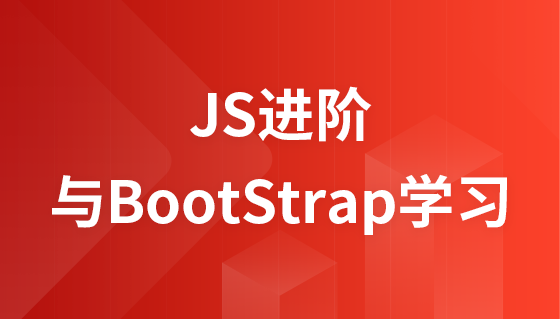
webrtc连接在手动交换offer/answer信令时,若应答未及时接受,可能因ice机制的交互性和资源消耗而导致连接失败。本文深入探讨了ice的工作原理、手动信令交换的局限性,并提供了优化方案,包括自动化信令、增量式ice候选者交换,以及合理配置`icecandidatepoolsize`,以确保webrtc连接的稳定与高效。
WebRTC(Web Real-Time Communication)作为一项强大的技术,允许浏览器之间进行实时音视频通信和数据传输。其核心在于点对点(P2P)连接的建立,这依赖于信令交换(SDP Offer/Answer)和ICE(Interactive Connectivity Establishment)机制来穿越复杂的网络环境(如NAT)。然而,在某些场景下,尤其当信令交换过程涉及到人工干预或长时间延迟时,WebRTC连接可能会表现出不稳定的行为,例如在指定时间内未接受应答就会导致iceConnectionState变为'failed'。这并非WebRTC的缺陷,而是对其实时性要求和底层机制的误解或不当使用所致。
要理解连接时效性问题,首先需深入了解WebRTC的信令过程和ICE机制。
WebRTC连接的建立始于两个对等端(Peer)之间的会话描述协议(SDP)交换。一个Peer创建Offer(提议),其中包含其支持的媒体类型、编解码器、网络协议等信息。另一个Peer接收Offer后,根据自身能力生成Answer(应答),并发送回去。这个Offer/Answer模型是协商通信参数的基础。
ICE是WebRTC实现NAT穿越和寻找最佳连接路径的关键协议。它不仅仅是简单地交换IP地址和端口,而是一个高度“交互式”的过程。
问题描述中提到,如果创建的Answer在Firefox中超过10秒(Chrome中15秒)未被接受,iceConnectionState会返回'failed'。这正是手动信令交换带来的时效性问题。
为了解决手动信令交换带来的时效性问题并提高WebRTC连接的健壮性,应遵循以下实践指南:
WebRTC的信令交换应尽可能自动化,避免人工干预。
一旦收到远程SDP(无论是Offer还是Answer),应尽快调用setRemoteDescription()。延迟调用会阻碍ICE的正常交互,导致连接失败。
与等待所有ICE候选者收集完毕再发送不同,WebRTC推荐采用增量式(trickle ICE)交换方式。
这种方式允许ICE探测尽早开始,即使在所有候选者都收集完成之前,也能大大提高连接建立的速度和成功率。
以下是优化后的WebRTC P2P连接建立流程,重点展示了增量式ICE候选者交换。假设sendSignalingMessage和onSignalingMessage是与信令服务器交互的函数。
export default class P2P {
constructor() {
this.peerConnection = null;
this.dataChannel = null;
this.configuration = {
iceServers: [
{
urls: ['stun:stun4.l.google.com:19302']
}
],
// 推荐使用默认值或0/1,避免过大的资源浪费
iceCandidatePoolSize: 0
};
// 假设这是一个用于发送信令消息的函数
this.sendSignalingMessage = (message) => {
console.log('Sending signaling message:', message);
// 实际应用中,这里会通过WebSocket等发送给远程Peer
};
};
createPeerConnection = () => {
this.peerConnection = new RTCPeerConnection(this.configuration);
this.openDataChannel();
// 监听ICE候选者生成事件,实现增量式交换
this.peerConnection.onicecandidate = (event) => {
if (event.candidate) {
// 将ICE候选者发送给远程Peer
this.sendSignalingMessage({ type: 'iceCandidate', candidate: event.candidate });
} else {
console.log('ICE gathering complete.');
// 如果所有候选者都已发送,且SDP也已发送,则可以认为ICE收集阶段完成
}
};
this.peerConnection.addEventListener('connectionstatechange', () => {
console.log('Connection state changed:', this.peerConnection.connectionState);
});
this.peerConnection.oniceconnectionstatechange = () => {
console.log('ICE connection state changed:', this.peerConnection.iceConnectionState);
};
// 监听数据通道连接状态
this.peerConnection.ondatachannel = (event) => {
this.dataChannel = event.channel;
this.dataChannel.onopen = () => console.log('Data channel opened!');
this.dataChannel.onmessage = (e) => console.log('Data channel message:', e.data);
this.dataChannel.onclose = () => console.log('Data channel closed!');
this.dataChannel.onerror = (e) => console.error('Data channel error:', e);
};
};
openDataChannel = () => {
let options = {
ordered: true // reliable在WebRTC中已更名为ordered
};
this.dataChannel = this.peerConnection.createDataChannel('test', options);
this.dataChannel.binaryType = "arraybuffer";
this.dataChannel.onopen = () => console.log('Local Data channel opened!');
this.dataChannel.onmessage = (e) => console.log('Local Data channel message:', e.data);
this.dataChannel.onclose = () => console.log('Local Data channel closed!');
this.dataChannel.onerror = (e) => console.error('Local Data channel error:', e);
};
createOffer = async () => {
this.createPeerConnection();
const offer = await this.peerConnection.createOffer();
await this.peerConnection.setLocalDescription(offer);
console.log("Created local offer.");
// 将Offer发送给远程Peer
this.sendSignalingMessage({ type: 'offer', sdp: this.peerConnection.localDescription });
return JSON.stringify(this.peerConnection.localDescription);
};
acceptOffer = async (offerSdp) => {
if (!this.peerConnection) {
this.createPeerConnection();
}
const offer = new RTCSessionDescription(offerSdp);
await this.peerConnection.setRemoteDescription(offer);
console.log("Accepted remote offer.");
};
createAnswer = async () => {
const answer = await this.peerConnection.createAnswer();
await this.peerConnection.setLocalDescription(answer);
console.log("Created local answer.");
// 将Answer发送给远程Peer
this.sendSignalingMessage({ type: 'answer', sdp: this.peerConnection.localDescription });
return JSON.stringify(this.peerConnection.localDescription);
};
acceptAnswer = async (answerSdp) => {
// 确保peerConnection已存在且远程描述尚未设置为Answer
// 注意:这里的if条件可能需要根据实际信令流程调整
// 一般情况下,直接设置即可,WebRTC内部会处理描述更新
if (this.peerConnection && (!this.peerConnection.currentRemoteDescription || this.peerConnection.currentRemoteDescription.type === 'offer')) {
const answer = new RTCSessionDescription(answerSdp);
await this.peerConnection.setRemoteDescription(answer);
console.log('Accepted remote answer.');
} else {
console.warn('PeerConnection not initialized or remote description already set.');
}
};
// 接收到远程Peer的ICE候选者时调用
addRemoteIceCandidate = async (candidate) => {
try {
if (this.peerConnection && candidate) {
await this.peerConnection.addIceCandidate(new RTCIceCandidate(candidate));
console.log('Added remote ICE candidate.');
}
} catch (e) {
console.error('Error adding remote ICE candidate:', e);
}
};
// 模拟信令服务器接收到消息的入口
onSignalingMessage = async (message) => {
switch (message.type) {
case 'offer':
await this.acceptOffer(message.sdp);
await this.createAnswer(); // 收到Offer后立即创建并发送Answer
break;
case 'answer':
await this.acceptAnswer(message.sdp);
break;
case 'iceCandidate':
await this.addRemoteIceCandidate(message.candidate);
break;
default:
console.warn('Unknown signaling message type:', message.type);
}
};
};代码改进点:
WebRTC连接的建立是一个实时且交互性强的过程,其成功与否高度依赖于信令交换的时效性。手动交换Offer/Answer信令并引入延迟,会干扰ICE机制的正常运行,导致连接失败。为了构建稳定可靠的WebRTC应用,开发者应:
遵循这些最佳实践,将有助于克服WebRTC连接建立中的时效性挑战,确保应用能够提供流畅、稳定的实时通信体验。
以上就是WebRTC连接建立时效性问题解析:手动信令交换的挑战与优化的详细内容,更多请关注php中文网其它相关文章!

每个人都需要一台速度更快、更稳定的 PC。随着时间的推移,垃圾文件、旧注册表数据和不必要的后台进程会占用资源并降低性能。幸运的是,许多工具可以让 Windows 保持平稳运行。




Copyright 2014-2025 https://www.php.cn/ All Rights Reserved | php.cn | 湘ICP备2023035733号